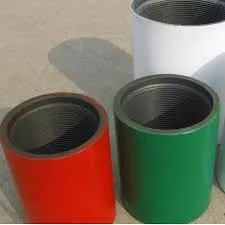- Afrikaans
- Albanian
- Amharic
- Arabic
- Armenian
- Azerbaijani
- Basque
- Belarusian
- Bengali
- Bosnian
- Bulgarian
- Catalan
- Cebuano
- Corsican
- Croatian
- Czech
- Danish
- Dutch
- English
- Esperanto
- Estonian
- Finnish
- French
- Frisian
- Galician
- Georgian
- German
- Greek
- Gujarati
- Haitian Creole
- hausa
- hawaiian
- Hebrew
- Hindi
- Miao
- Hungarian
- Icelandic
- igbo
- Indonesian
- irish
- Italian
- Japanese
- Javanese
- Kannada
- kazakh
- Khmer
- Rwandese
- Korean
- Kurdish
- Kyrgyz
- Lao
- Latin
- Latvian
- Lithuanian
- Luxembourgish
- Macedonian
- Malgashi
- Malay
- Malayalam
- Maltese
- Maori
- Marathi
- Mongolian
- Myanmar
- Nepali
- Norwegian
- Norwegian
- Occitan
- Pashto
- Persian
- Polish
- Portuguese
- Punjabi
- Romanian
- Russian
- Samoan
- Scottish Gaelic
- Serbian
- Sesotho
- Shona
- Sindhi
- Sinhala
- Slovak
- Slovenian
- Somali
- Spanish
- Sundanese
- Swahili
- Swedish
- Tagalog
- Tajik
- Tamil
- Tatar
- Telugu
- Thai
- Turkish
- Turkmen
- Ukrainian
- Urdu
- Uighur
- Uzbek
- Vietnamese
- Welsh
- Bantu
- Yiddish
- Yoruba
- Zulu
well casing coupling
Understanding Well Casing Couplings A Key Component in Drilling Operations
Well casing couplings are critical components in the oil and gas industry, playing a vital role in the construction and maintenance of wellbores. These couplings are designed to connect segments of casing pipes, which are essential for maintaining the structural integrity of the well and ensuring that the drilling process proceeds safely and efficiently.
Casing is a series of large-diameter pipes that are inserted into a drilled well. Its primary purpose is to stabilize the wellbore, prevent collapses, and protect groundwater from contamination. The casing also facilitates the management of fluid flows during drilling, production, and abandonment processes. However, these pipes cannot function effectively in isolation; they need to be securely fastened together, which is where coupling comes into play.
Understanding Well Casing Couplings A Key Component in Drilling Operations
There are various types of coupling designs, including threaded, welded, and slip-on couplings, each serving a specific purpose and meeting different operational requirements. Threaded couplings, for example, are the most common and allow for easy assembly and disassembly of the casing segments. Welded couplings offer more robust connections, suitable for high-pressure applications, where the risk of burst is a concern.
well casing coupling

One of the significant trends in well casing technology is the continuous improvement in material science. Advances in metallurgy have led to the development of couplings that are not only stronger but also lighter. This reduction in weight can significantly decrease the overall cost of drilling operations, as it simplifies the handling and installation processes.
In addition, with the increasing focus on sustainability, the industry is pushing towards using more eco-friendly materials and processes. Innovative coupling designs are being evaluated for their ability to minimize environmental impact, with a focus on reducing the chances of leaks and improving overall well integrity.
Furthermore, the ongoing digital transformation within the oil and gas sector is paving the way for more sophisticated techniques for testing and monitoring casing couplings. Advanced sensors and monitoring systems can now provide real-time data on the condition of well casing, giving operators the insights needed to prevent failures and enhance safety measures.
In conclusion, well casing couplings are a fundamental aspect of drilling operations that ensure well integrity and environmental protection. As the industry continues to innovate, the development of more efficient, durable, and sustainable coupling technologies will remain a priority, reflecting the ongoing commitment to both operational excellence and environmental stewardship.
-
Tubing Pup Joints: Essential Components for Oil and Gas OperationsNewsJul.10,2025
-
Pup Joints: Essential Components for Reliable Drilling OperationsNewsJul.10,2025
-
Pipe Couplings: Connecting Your World EfficientlyNewsJul.10,2025
-
Mastering Oilfield Operations with Quality Tubing and CasingNewsJul.10,2025
-
High-Quality Casing Couplings for Every NeedNewsJul.10,2025
-
Boost Your Drilling Efficiency with Premium Crossover Tools & Seating NipplesNewsJul.10,2025







